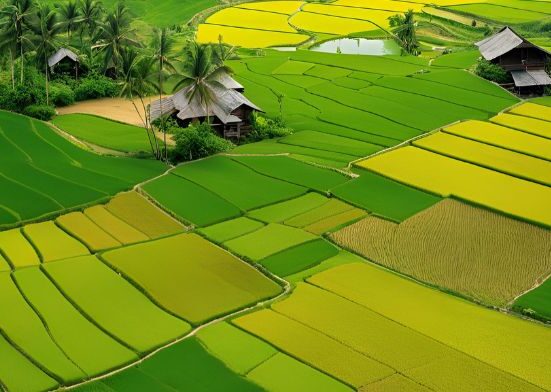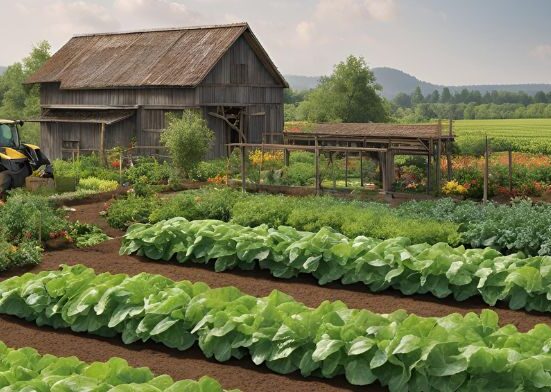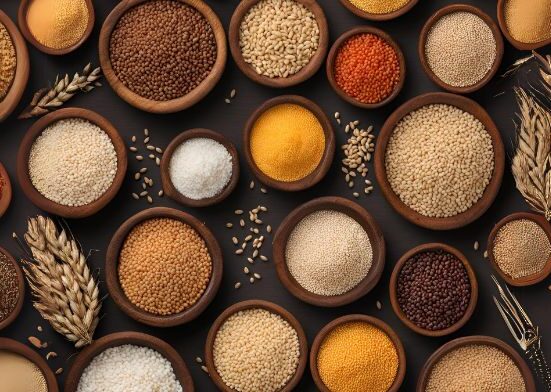Cows are among the most important domesticated animals in the world, playing a vital role in agriculture, dairy farming, meat production, and even cultural traditions. For thousands of years, humans have relied on cows not only for food but also for economic stability and sustainable farming practices. Today, there are hundreds of cow breeds worldwide, each with its own unique characteristics, productivity levels, and adaptability to various environments.From high-yielding dairy cows like Holsteins and Jerseys to premium beef breeds like Angus and Hereford, and even dual-purpose cattle that provide both milk and meat, the diversity among cow breeds is vast and fascinating. Understanding these differences is crucial for farmers, dairy producers, and even consumers who want to make informed choices.
In this blog post, we’ll explore the different types of cows, their breeds, characteristics, and uses. Whether you’re interested in dairy farming, beef production, or simply curious about the role of cows in agriculture, this guide will give you a complete picture of the world’s most significant cattle breeds.
Understanding Cow Breeds
Cow breeds are classified based on their physical traits, productivity, and adaptability to different environments. Over centuries, selective breeding has created a diverse range of cattle, each suited to specific purposes such as milk production, meat quality, or dual-purpose use. cow type animals Understanding these differences helps farmers and dairy producers choose the right breed for their goals.
Here are the key factors that define and differentiate cow breeds:
Size and Weight
Different cow breeds vary significantly in body size and weight, which affects their productivity and the associated maintenance needs.
- Large breeds, such as Holstein and Charolais, Orchard Trees are preferred for high milk yield or beef production.
- Smaller breeds like Jersey or Gir are ideal for small-scale dairy farming due to their lower feed requirements.
Milk Production Capacity
Some breeds are genetically designed to produce large quantities of milk, while others make smaller amounts with a higher fat content.
- High milk yield breeds: Holstein, Sahiwal, Brown Swiss
- Rich, creamy milk breeds: Jersey, Gir, Red Sindhi
Meat Quality
Beef breeds are raised specifically for their tenderness, marbling, and flavour.
- Premium beef breeds: Angus, Hereford, Wagyu
- Lean meat breeds: Charolais, Limousin
Climate Adaptability
Certain breeds are naturally suited for specific climates and geographies:
- Tropical breeds, such as Sahiwal, Gir, and Red Sindhi, thrive in hot and humid regions.
- Cold-weather breeds, such as Highland and Brown Swiss, are better adapted to temperate and colder climates.
Purpose and Utility
Cow breeds are often classified into three main categories:
- Dairy breeds → Known for producing large amounts of milk
- Beef breeds → Raised mainly for high-quality meat
- Dual-purpose breeds → Useful for both milk and meat production
In the next section, we’ll explore these categories in detail, What Is the Difference Between Subsistence And Commercial looking at the significant species cattle based on their purpose and the most popular breeds within each group.
Major Types of Cows by Purpose

Cows are bred for specific purposes, and their major types can be categorised based on their primary use: dairy, beef, or dual-purpose. Below is a concise overview of these categories, including their key characteristics and examples of prominent breeds within each category.
Dairy Cows Purpose:
Bred for milk production, with high yields of milk rich in fat and protein for human consumption, cheese, butter, and other dairy products. Characteristics:
Leaner bodies, prioritising energy for milk production. Large udders with high milk capacity. Typically milked twice or thrice daily. Examples of Breeds: Holstein: Known for the highest milk yield, producing up to 7-10 gallons per day, with lower butterfat (around 3.5-4%). Black-and-white coat. Jersey: Smaller breed, produces milk with high butterfat (4.5-5.5%), ideal for cheese and butter. Light brown coat. Guernsey: Golden-colored milk with high butterfat and protein, known for docile temperament. Ayrshire: Hardy breed with moderate milk yield and good udder structure, red-and-white coat. Brown Swiss: Large, sturdy cows with high milk yield and good protein content, suited for cheese production.
Beef Cows Purpose:
Raised for meat production, valued for fast growth, muscle development, and high-quality beef. Characteristics:
Muscular builds with greater body mass. Focus on traits like marbling, feed efficiency, and carcass yield. Typically slaughtered at 18-24 months for optimal meat quality. Examples of Breeds: Angus: Popular for tender, well-marbled beef (e.g., Certified Angus Beef). Black or red coat, polled (hornless). Hereford: Hardy breed with good feed efficiency, red body with white face, known for adaptability. Charolais: Large, white-coated breed with rapid growth and leaner meat, often used in crossbreeding. Simmental: Large frame, good muscling, and fast growth, with red-and-white or black coats. Limousin: Lean, high-yield carcasses with excellent meat-to-bone ratio, golden-red coat.
Dual-Purpose Cows Purpose:
Bred for both milk and meat production, offering moderate yields in both areas, often used in mixed farming systems. Characteristics:
Balanced body structure, not as specialised as dairy or beef breeds. Moderate milk production and decent carcass quality. Often favoured in smaller farms or regions with diverse agricultural needs. Examples of Breeds: Milking Shorthorn: Good milk yield with decent beef quality, red, white, or roan coat. Dexter: Small breed, ideal for small farms, produces moderate milk and beef, black or red coat. Normande: French breed with rich milk for cheese and good beef quality, white with red or black spots. Montbéliarde: Known for milk used in speciality cheeses and respectable beef output, with a red-and-white coat.
Additional Notes
Crossbreeding: Common in both dairy and beef industries to enhance traits like milk yield, disease resistance, or meat quality. For example, Holstein-Jersey crosses combine high milk volume with richer fat content. Regional Variations: Breeds are often selected based on climate and farming practices. For instance, Zebu breeds (e.g., Brahman) are used in tropical regions for their heat tolerance, primarily for beef. Specialised Breeds: Certain breeds, such as the Texas Longhorn, are less common but highly valued for their niche purposes (e.g., lean meat or cultural significance).
If you’d like a deeper dive into specific breeds, Understanding Food Costs and Modern Farming Practices their performance metrics, or a chart comparing milk yields or beef quality, let me know! For example, I could create a chart comparing milk production across different dairy breeds or growth rates for various beef breeds, if you provide specific data preferences.
Popular Indigenous Cow Breeds Around the World
Cows are raised on every continent, but each region has its own indigenous breeds that have evolved or been selectively bred to adapt to local climates, farming practices, and cultural needs. These native breeds often possess unique traits such as disease resistance, heat tolerance, and efficient feed conversion, making them highly valuable for sustainable farming.
Here’s a look at some of the most popular indigenous cow breeds from different parts of the world:
Indigenous Cow Breeds in India 🇮🇳
India is home to several world-renowned cow breeds, renowned for their high milk yield, heat tolerance, and cultural significance.
- Gir: Originating from Gujarat, Gir cows are renowned for their nutritious A2 milk, disease resistance, and adaptability to hot climates.
- Sahiwal: Found mainly in Punjab, Sahiwal cows produce high-fat milk and are excellent for tropical dairy farming.
- Red Sindhi: Popular for both dairy and draught purposes, this hardy breed thrives in dry and humid conditions.
Indigenous Cow Breeds in Bangladesh 🇧🇩
Bangladesh relies heavily on indigenous breeds for milk, meat, and agricultural work.
- Pabna: Famous for its rich milk content and high yield, this breed is primarily found in the Pabna district.
- North Bengal Grey: Known for being low-maintenance and Modern Commercial Agriculture: Feeding the Global Economy well-adapted to local conditions, making them suitable for small-scale farmers.
- Red Chittagong: A dual-purpose breed valued for both milk and beef production, with strong disease resistance.
Indigenous Cow Breeds in the USA 🇺🇸
While the U.S. is known for commercial breeds, some indigenous varieties are iconic:
- Texas Longhorn – Recognised by their long, curved horns. Considering resilience in challenging conditions, these cows are valued for their lean meat. Cows are prized for lean beef.
- Florida Cracker – One of the oldest U.S. breeds, highly adaptable to hot, humid climates and low-quality forage.
Indigenous Cow Breeds in Europe 🇪🇺
Europe boasts cattle breeds developed for high-quality meat, dairy, and crossbreeding purposes.
- Belgian Blue – Famous for its “double-muscling” trait, producing exceptionally lean and tender beef.
- Limousin (France) – Known for premium meat quality and adaptability to various farming systems.
- Highland Cattle (Scotland) – Recognised by their long, shaggy hair, they thrive in cold, rugged terrains.
Indigenous Cow Breeds in Africa
African breeds are specially adapted to hot climates, scarce water, and tropical diseases.
- Ankole-Watusi – Famous for their massive horns and exceptional hardiness, they are commonly found in Uganda and Rwanda.
- Boran (Kenya) – Highly efficient in feed conversion and valued for both beef and milk production.
- Nguni (South Africa) – Known for colourful hides and adaptability to harsh environments.
Indigenous Cow Breeds in Australia 🇦🇺
Australia has developed breeds that thrive in semi-arid conditions.
- Droughtmaster – As the name suggests, this breed is highly drought-resistant, producing good-quality beef even in dry conditions.
- Australian Lowline – Compact, efficient, and ideal for small farms, known for producing marbled, tender meat.
Why Indigenous Breeds Matter
- Climate Adaptability – Native breeds thrive in local environments.
- Disease Resistance – Many are naturally resistant to regional diseases.
- Cultural Heritage – In several countries, indigenous cattle hold significant religious and social value.
- Sustainability – Lower feed, water, and maintenance needs make them eco-friendly.
Factors to Consider When Choosing a Cow Breed

Selecting the right cow breed is one of the most critical decisions for farmers, dairy owners, and cattle ranchers. The breed you choose directly impacts milk production, meat quality, feed costs, and overall profitability. With numerous options available, it’s essential to consider several key factors before making a decision.
Here are the key considerations when choosing the right cow breed for your farm or business:
Purpose of Rearing
Before anything else, determine why you’re raising cows:
- Dairy Production: If your goal is milk production, consider high-yield dairy breeds such as Holstein, Jersey, or Sahiwal.
- Beef Production: For premium meat, consider beef breeds such as Angus, Hereford, or Wagyu.
- Dual-Purpose Farming: If you want both milk and meat, breeds of cows like Simmental, Red Sindhi, or Shorthorn are ideal.
Climate Suitability
Cows must be able to thrive in the local climate to remain healthy and productive:
- Tropical & Hot Climates → Choose heat-tolerant breeds like Gir, Sahiwal, or Boran.
- Cold & Temperate Regions → Opt for breeds like Brown Swiss, Highland Cattle, or Holstein.
Tip: Indigenous breeds are often better adapted to local environmental conditions.
Feed and Maintenance Requirements
Different breeds have different nutritional needs:
- High-producing dairy breeds require nutrient-rich feed and better management.
- Indigenous breeds and hardy beef breeds often thrive on low-quality forage with minimal maintenance.
Make sure you match the breed with your farm’s available feed resources.
Disease Resistance
Disease susceptibility can make or break profitability:
- Indigenous breeds tend to have better natural immunity against local diseases.
- Exotic or crossbred cattle may require more intensive healthcare and vaccination.
Selecting a disease-resistant breed reduces treatment costs and minimises losses.
Productivity and Profitability
Evaluate each breed’s milk yield, fat content, growth rate, and meat quality:
- High milk yield = consistent income from dairy
- Premium beef quality = better market price
- Dual-purpose breeds = versatility and flexibility for small farmers.
Initial Cost and Return on Investment (ROI)
Some breeds, types of cattle particularly those that are imported or crossbred, can be expensive to purchase and maintain. Always analyse:
- Purchase cost
- Expected milk or meat output
- Maintenance expenses
- Market demand and selling price
Local Availability and Breeding Support
Choose breeds that are readily available in your region and supported by local breeding programs. This ensures easier access to:
- Veterinary services
- Quality feed
- Training and farmer support
- Affordable replacement stock
Sustainability and Environmental Impact
Eco-friendly farming is becoming increasingly important:
- Indigenous breeds often have a lower carbon footprint due to efficient feed conversion.
- Hardy breeds consume less water and adapt better to natural pastures.
Environmental and Cultural Importance of Cows
Beef cattle breeds are far more than just a source of milk, meat, and hides; they play a vital role in maintaining environmental balance and hold profound cultural significance in numerous parts of the world. Understanding their ecological contributions and artistic value can help us appreciate the importance of sustainable cattle farming.
Environmental Importance of Cows
Contribution to Soil Fertility
Cow dung is a natural fertiliser rich in nitrogen, phosphorus, and potassium. Farmers have utilised it for centuries to enhance soil quality and increase crop yields. It improves:
- Soil texture and water retention
- Microbial activity for healthier farmland
- Reduced reliance on chemical fertilisers
Organic Farming and Sustainability
In organic and regenerative farming, cows are central to creating closed-loop agricultural systems:
- Cow dung → used as organic manure.
- Cow urine → natural pest repellent and compost enhancer
- Biogas production → cow waste converted into renewable energy
Supporting Biodiversity
Grazing cows help maintain grassland ecosystems by:
- Preventing overgrowth of invasive plants
- Recycling nutrients through manure
- Providing habitats for insects and small wildlife
Climate Change Impact
While cows are often linked to greenhouse gas emissions, sustainable cattle farming can reduce environmental damage:
- Rotational grazing helps restore soil health and sequester carbon.
- Indigenous breeds require less feed and water, minimising resource consumption.
- Organic agriculture with cows can help balance ecosystems naturally.
Religious and Spiritual Significance
- India: Cows are revered as sacred in Hinduism, symbolising prosperity, motherhood, and life. Festivals like Gopashtami and Pongal celebrate their importance.
- Nepal: The cow is the national animal and revered in several religious traditions.
- Africa: Among tribes such as the Maasai, different types of breeds of cows are seen as a symbol of social status and prosperity.
Economic and Social Value
In rural communities, cows are considered a family asset:
- A source of food, income, and labour
- Integral to dowries, ceremonies, and traditional gifts
- Often associated with social prestige in agrarian societies.
Cultural Heritage and Festivals
In many countries, cows are celebrated through festivals and rituals:
- India → Cow worship during Makar Sankranti and Govardhan Puja
- Spain → Cultural traditions like cattle festivals and rodeos
- South America → Gaucho festivals honour cattle ranching as part of heritage.
Balancing Culture and Sustainability
While cows are deeply rooted in tradition, modern farming must balance cultural respect with environmental responsibility:
- Promoting ethical cattle farming
- Preserving indigenous breeds
- Encouraging eco-friendly dairy and beef production
Challenges in Cow Breeding and Farming
Raising cows for milk, meat, or other purposes has long been a vital component of the agricultural industry. However, modern cattle farming is accompanied by a range of challenges that impact productivity, sustainability, and profitability. Farmers today must balance animal health, environmental factors, and market demands while also adopting modern breeding techniques to stay competitive.
Below are the significant challenges faced in cow breeding and farming:
Climate Change and Environmental Stress
- Rising temperatures and unpredictable weather patterns reduce grazing quality and milk production.
- Lower milk production and decreased fertility can result from heat stress. Especially in exotic breeds.
- Frequent droughts and floods affect the availability of feed and water.
- Farmers must invest in climate-resilient breeds and sustainable grazing practices.
Disease Outbreaks and Health Issues
Cattle are vulnerable to infectious diseases like:
- Foot-and-Mouth Disease (FMD)
- Bovine Tuberculosis
- Mastitis (common in dairy cows)
- Tick-borne diseases
Challenges faced by farmers:
- High veterinary costs for treatment and vaccination
- Risk of losing entire herds in severe outbreaks
- Need for better biosecurity measures.
Feeding and Nutrition Problems
- High-quality fodder and balanced nutrition are crucial for maximising milk yield and promoting optimal growth rates.
- Rising prices of cattle feed make farming expensive.
- Limited access to nutrient-rich forage in drought-prone regions.
- Small-scale farmers often struggle to maintain a consistent supply of feed.
Decline of Indigenous Breeds
- Crossbreeding for higher milk and meat production often leads to a decline in native breeds.
- Indigenous cattle are naturally heat-tolerant, disease-resistant, and low-maintenance, but they are being replaced by exotic breeds that require more care and resources.
- Preserving local genetic diversity is crucial for sustainable cattle farming.
Breeding Challenges
- Selecting the right breed for local conditions is a complex process.
- Crossbreeding programs can reduce fertility and weaken disease resistance.
- There is a lack of access to advanced breeding technologies, such as artificial insemination (AI), in rural areas.
- There is a shortage of trained professionals to effectively guide breeding programs.
High Cost of Cattle Farming
- Initial investment in quality breeds, infrastructure, and equipment is high.
- Rising expenses on feed, healthcare, and labour reduce profit margins.
- Small-scale farmers often lack access to affordable credit or Government subsidies.
Market Fluctuations and Low Profitability
- Global milk and beef prices are highly volatile, impacting farmers’ income.
- Exploitation by intermediaries leads to lower earnings for cattle owners.
- A lack of proper cold storage, transportation, and processing facilities in rural areas reduces profitability.
Environmental Concerns
- Overgrazing leads to land degradation and loss of biodiversity.
- Improper waste management from large-scale farms contributes to water pollution.
- Cattle farming is often associated with methane emissions, necessitating more sustainable practices, such as rotational grazing and the generation of biogas.
Lack of Farmer Education and Training

- Many small-scale farmers lack modern knowledge about breeding, feeding, and disease control.
- There is limited access to Government schemes and veterinary services.
- Awareness of sustainable farming practices remains low in many rural regions.
Overcoming These Challenges
To improve productivity and sustainability, farmers can adopt:
- Climate-resilient indigenous breeds
- Organic farming techniques to reduce chemical dependency
- Modern breeding technologies like AI and embryo transfer
- Government and NGO support programs for subsidies, training, and insurance
- Sustainable feed management and rotational grazing practices
Cow breeding and farming are crucial for ensuring food security, supporting rural livelihoods, and driving economic growth; however, modern challenges necessitate innovative solutions to address these needs. Commercial Farming: By combining traditional knowledge, scientific advancements, cow types and sustainable practices, farmers can ensure a more profitable and environmentally responsible cattle industry.
Conclusion
Cows have been an integral part of human life for thousands of years, providing us with milk, meat, manure, and economic stability. With hundreds of breeds around the world, from high-yielding dairy cows like Holstein and Jersey to premium beef breeds such as Angus and Hereford, as well as indigenous cattle like Gir, Sahiwal, and Ankole-Watusi, the diversity among cow breeds is genuinely remarkable.Choosing the right cow breed depends on several factors, including purpose, climate adaptability, disease resistance, and maintenance needs. While exotic breeds offer high productivity, indigenous cattle are often better suited to local environments, requiring fewer resources and supporting sustainable farming practices.
However, modern cattle farming presents its own challenges, including climate change, rising feed costs, disease outbreaks, and the decline of native breeds. To overcome these issues, sustainable practices, scientific breeding techniques, and preservation of indigenous genetics are essential.Ultimately, cows are more than just livestock; they are environmental allies, cultural symbols, and valuable economic assets. By making informed choices and adopting responsible farming practices, we can ensure that cattle farming remains profitable, environmentally friendly, and culturally significant for generations to come. If you’re planning to start dairy or beef farming, types of beef cattle take time to research breeds, evaluate your local environment, and seek expert guidance. The right decisions today will lead to sustainable success tomorrow.
FAQ
What is the best cow breed for milk production?
Holstein cows are the most popular for high milk yield, producing up to 9,000 litres annually. Jersey and Sahiwal cows also provide rich, creamy milk with a higher fat content, making them ideal for dairy products and small-scale farming.
Which cow breed is most profitable for beef farming?
Angus and Hereford breeds are highly profitable due to their tender, marbled meat and strong market demand. Wagyu cattle also yield premium beef, fetching higher prices, making them an excellent investment for large-scale beef production.
Can one cow breed be suitable for both milk and meat?
Yes, dual-purpose breeds like Simmental, Red Sindhi, and Shorthorn provide both quality milk and good beef. These breeds are ideal for farmers seeking balanced productivity, especially in small or mixed-farming systems where versatility is essential.
What are the most popular indigenous cow breeds in Asia?
Popular Asian breeds include Gir, Sahiwal, Red Sindhi, and Pabna. These cattle are well-adapted to tropical climates, resistant to diseases, and produce high-quality A2 milk, making them suitable for sustainable farming across the Asian continent.
How do I choose the right cow breed for my farm?
First, define your goal: milk, meat, or dual-purpose farming. Then, consider factors such as climate suitability, disease resistance, feed availability, and maintenance costs. Selecting a breed aligned with your resources ensures better productivity and long-term profitability.







